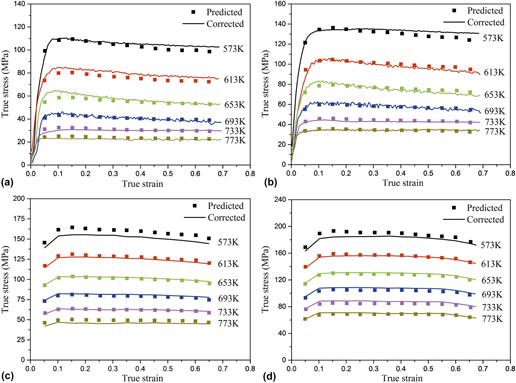Crossref Citations
This article has been cited by the following publications. This list is generated based on data provided by
Crossref.
Zhong, Liwei
Gao, Wenli
Feng, Zhaohui
Lu, Zheng
and
Zhu, Congcong
2019.
Hot deformation characterization of as-homogenized Al-Cu-Li X2A66 alloy through processing maps and microstructural evolution.
Journal of Materials Science & Technology,
Vol. 35,
Issue. 10,
p.
2409.
Peng, Zhuowei
Pan, Qinglin
Cai, Shan
Li, Jinfeng
and
Liang, Wenjie
2019.
Effect of different aging processes on the corrosion behavior of new Al–Cu–Li–Zr–Sc alloys.
Materials and Corrosion,
Vol. 70,
Issue. 12,
p.
2266.
Shi, Chunchang
Wu, Guohua
Zhang, Liang
Zhang, Xiaolong
Sun, Jiangwei
Zhang, Jinshuo
and
Wang, Yixiao
2021.
Variation in the microstructure and mechanical properties of permanent mold cast Al–3Li–2Mg–0.1Zr alloy with Zn addition.
Journal of Materials Research,
Vol. 36,
Issue. 10,
p.
2071.
Li, Shikang
Li, Luoxing
Liu, Zhiwen
and
Wang, Guan
2021.
Microstructure and Its Influence on the Welding Quality of 6063 Aluminum Alloy Porthole Die Extrusion.
Materials,
Vol. 14,
Issue. 21,
p.
6584.
CAO, Fu-rong
YIN, Bin
LIU, Si-yuan
SHI, Lu
WANG, Shun-cheng
and
WEN, Jing-lin
2021.
Microstructural evolution, flow stress and constitutive modeling of Al−1.88Mg−0.18Sc−0.084Er alloy during hot compression.
Transactions of Nonferrous Metals Society of China,
Vol. 31,
Issue. 1,
p.
53.
He, Guoai
Li, Kai
Yang, Yong
Liu, Yu
Wu, Wenke
and
Huang, Cheng
2021.
Effect of heat treatment on the microstructure and mechanical properties of cryogenic rolling 2195 Al–Cu–Li alloy.
Materials Science and Engineering: A,
Vol. 822,
Issue. ,
p.
141682.
Huang, Jiaying
Feng, Siyu
Li, Shiyong
Wu, Cuilan
and
Chen, Jianghua
2021.
The crystallographic corrosion and its microstructure in an Al-Cu-Li alloy.
Journal of Alloys and Compounds,
Vol. 861,
Issue. ,
p.
158588.
Huang, J.Y.
Ming, W.Q.
and
Wu, C.L.
2022.
Effect of microstructure on corrosion behaviour of Al-Cu-Li alloys.
Materials Characterization,
Vol. 194,
Issue. ,
p.
112416.
Jia, Lei
Liu, Yang
Xing, Zhiguo
He, Gengchao
Lu, Zhenlin
and
Zhou, Yongxin
2022.
Hot deformation behavior of CNTs/Al-Li composite prepared by powder metallurgy.
Carbon Letters,
Vol. 32,
Issue. 5,
p.
1345.
2022.
